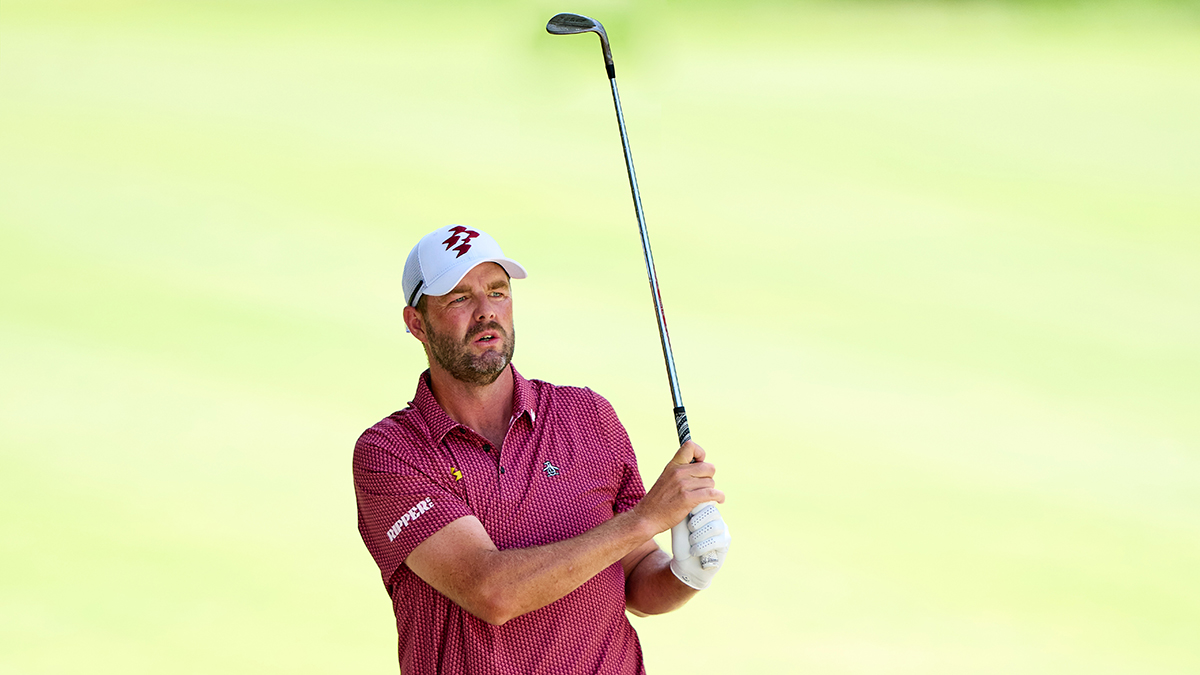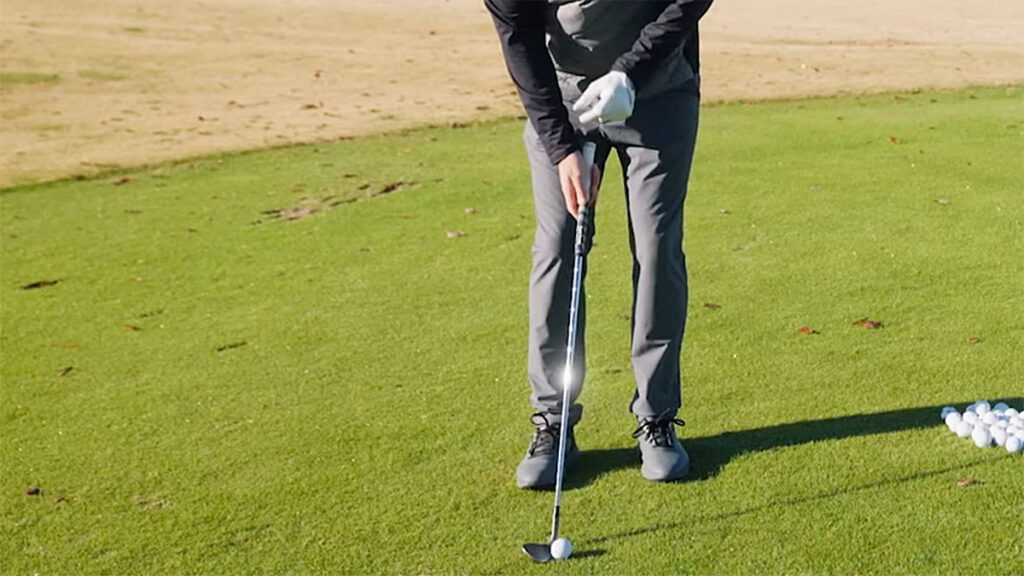Marc Leishman: Wedge Play 101 – Australian Golf Digest

- by Admin
- September 25, 2024

They’re called ‘scoring clubs’ for good reason. Here’s how you can master them in any conditions.
I love my wedges. Why? Think about all the different shots you can hit, and how you can create a lot of spin. If there’s a front pin and you need to spin it back towards the hole, you can. If you need to take spin off, there are techniques for that too. And if it’s not a straight shot between you and the flag, you can shape your wedges on cue.
Great wedge play is all about pinpointing distance. If you apply a normal swing speed on a wedge shot – rather than trying to smash it – you will control the spin more, and the result will be better.
If playing at the top level has taught me anything, it’s that it’s crucial to have a good short game. On tour, every part of your game needs to be elite, but sometimes if your short game is really on, you can get away with not having a great ball-striking day or your driver can be a bit off. A good short game can pull you out of a lot of trouble. For that reason, it’s one of, if not the most important part of your game that demands plenty of practice. Here are a few of my wedge fundamentals you can use this weekend.
The setup
My wedge setup is quite versatile, with different bounces on the soles so I can hit a lot of different shots. The crowd always loves seeing players generate backspin, so that’s always fun to try to pull off when it’s needed.
I’ve got four wedges in the bag – a 47-degree option, a 51, 55 and a 60-degree lob wedge. In terms of distance, they range from 90 metres for the lob wedge to 130 metres for the pitching wedge. My gapping is spaced out fairly evenly. I can hit them a lot further if I really want to, but I feel like I lose a bit of control when I do that.
Warm-up routine
Normally my warm-up routine on the range will start with some sort of wedge. I’ll hit a few half swings to loosen up a little bit, then work my way through the bag. I don’t have any set number of shots that I like to hit with each club, and there isn’t any particular club that I prefer to hit. In every warm-up, I’ll change it up. If one club’s starting to wear out a little bit more over the preceding months, I’ll use something else so that wears out. I’ll gradually work my way through the irons. If I start with a sand wedge, I’ll go to a 9-iron, then a 5-iron, and I always hit all my woods (7-wood, followed by my 3-wood before finishing with the driver) before I hit a few more pitch shots to get a bit of feel before I head out onto the course.
Pitching wedge (47°)
First thing you’ll notice here is I just go with a neutral grip, same as what you would do with all your other clubs. My stance is roughly shoulder width apart, while the ball is slightly forward of centre. The club is about centre for the ball, a hair forward. If I want to hit it a little further, I can move it back in my stance a little, which delofts the wedge. If I’m trying to hit a little bit of a fade, I’ll put it a little further forward in my stance.
I’ve got different distances I can hit this club and I can do that by drawing it or fading it, or hitting it high or low. But the way I like to do it is by adjusting my ball position. If I need to hit it further, I’ll just move the ball back a little bit in my stance so I don’t have to hit it any harder because when I start swinging harder, it creates more spin, which – particularly if it’s windy – loses control. Adjusting your stance (ball position), I find, is the simplest way to control distance and is something I’ve done for quite a long time. Managing that creativity that you have inside you, sometimes it’s tempting to not hit the simpler shot. You sometimes want to hit the hardest shot because it’s often the most fun shot to hit and the shot the crowd wants to see, but sometimes that simple shot is the shot you definitely should be playing.
Sand wedge (51°)
I change things up a little bit with this just by narrowing my stance – a little less than shoulder width apart. Most of the time I’ll have the ball a little further back in my stance than I would my pitching wedge, purely for more control. I find if I’ve got the ball position a bit too far forward with my sand wedge, it comes out really high. Having grown up in the wind at Warrnambool, I don’t really like seeing the ball come out high. I guess everyone’s got a ‘window’ that they like to see the ball come out at, and when it comes out too high for me, I feel like I’ve got no control. That’s why I have the ball a little further back in my stance – it helps bring the ball flight down. With my sand wedge, I like to shape it a bit. If I’ve got a right pin, I’ll hit a little fade into it. Left pin? A little draw.

Lob wedge (60°)
I’m not hitting too many full shots with the 60, but if I was to hit a full shot, I would say the ball would be positioned right in the middle of my stance. Again, same as the sand wedge, I don’t like having it too far forward because it comes out really, really high. Most of the time when I’m hitting the 60, I’m trying to hit it between 50 and 90 metres, hopefully a little shorter. My layup distance is about 70 metres, so normally it’s not a full swing. I find if I have the full swing with the lob wedge, it’s landing at 80 metres and spinning back to about 70. So that’s not ideal unless the greens are really, really firm.
No.1 rule for hitting all wedges
Write this down: you want to hit the ball first and then the ground. You never want to try to lift it up in the air. We’re not looking for a huge divot after you hit the shot, either. A tendency of mine when I’m hitting wedges is I get too steep in my downswing, which means I’m coming down too steeply and take too big a divot. I think the most common mistake I see amateurs make is they try to help the ball in the air. They try to hit up on it with a wedge, which is basically impossible because you very, very rarely hit a wedge off a tee. It’s always off the ground or out of a not-so-great lie. If you try to hit up on it, with an upwards motion to promote more loft, you’re going to hit the ground first and chunk it or blade it. Hitting it with a descending blow – hitting the ball first and then taking a divot – is one of the things I would like to see amateurs do more. I see a lot of shots wasted around the greens, not only at the amateur level, but on the pro tour.
Just hit, don’t think, from 50 metres and in
Anything under about 50 metres, I don’t think about the swing. I try to just use my feel. The way I get that into my head is, if I’m going to throw a ball to you, I don’t think about how far back and through to take my hand, I just throw the ball. I just look at you and throw it, and it generally goes straight to you, right? I find that it’s the same with the shorter wedge shots from 30 to 50 metres. You can just look at it and hit it. Obviously, that takes practice to get right, but when I’m trying to think mechanics over these shorter shots, I find I come into a few problems and I’m better off just ‘feeling’ it.

WATCH NOW: Exclusive to the LIV Golf Plus App, get insights on how to improve your game from some of the best players in the world, including Cam Smith, Phil Mickelson, Bryson DeChambeau, Graeme McDowell, Bubba Watson, Talor Gooch, Ian Poulter and more.
Feature Image: Angel Martinez/getty images
The Latest News
-
November 15, 2024Red Dawn: Australian Football League’s Gold Coast Suns Launch ‘Fearless’ New Brand, Logo
-
November 15, 2024Kyrgios confirmed to return to ATP Tour at Brisbane International 2025
-
November 15, 2024Australian bounce India’s arch-enemy amid KL Rahul dilemma
-
November 15, 2024Nick Kyrgios set to make long-awaited return to tennis as comeback date revealed
-
November 15, 2024List wins elusive DP World Tour card, Barron loses his





